#166: Chlorociboria spp., Green Stain Fungi
Chlorociboria spp. include some of my favorite fungi. Although you don’t see their mushrooms very often, it is quite common to find pieces of wood that have been stained blue-green by Chlorociboria mycelium. This attractive and unusual coloration earned these fungi many common names, including “Green Stain Fungus,” “Blue Stain Fungus,” “Turquoise Elfcup,” and various combinations and derivatives of those. I enjoy finding the stained wood, especially during dry periods or over the winter, when mushrooms are scarce.1,2
Description
The most conspicuous part of Chlorociboria spp. is their mycelium, which stains wood blue-green.1,3,4,5 This characteristic color, which is the result of a pigment called xylindein,4 can vary depending upon conditions. I find the brightest colors on small pieces of dry, well-decayed wood that are completely colonized by Chlorociboria. Wet pieces of wood tend to be darker while larger pieces tend to have irregular staining. Different people also perceive the color differently. I tend to call Chlorociboria-stained wood “blue,” while most other people call it “green.”
One of the most interesting things about Chlorociboria is that you can see exactly where the fungus is growing in the wood, thanks to the blue-green color. The stained area represents everywhere that Chlorociboria hyphae are present. Most other mushrooms do not produce pigments in their hyphae, which makes it harder to see their territory.

Chemical structure of xylindein, the pigment responsible for the blue-green color of Chlorociboria. Public Domain image via Wikimedia
Chlorociboria does produce mushrooms, but they are tiny and ephemeral and as a result you find them only occasionally. The Green Stain Fungi produce cup- or disc-shaped mushrooms that are usually attached to their substrate by a short stipe. Depending on the position and species, the stipe can be central, eccentric, or even lateral. These mushrooms grow up to one centimeter in width and height, though are often smaller. The entire mushroom is blue-green in color and looks like a more concentrated version of the stained wood color. Spores are produced from the upper surface. You are most likely to find the mushrooms in the summer and fall soon after it rains.1,2,5,6
Species
North America has two species of Chlorociboria: C. aeruginascens and C. aeruginosa. The easiest way to differentiate between these two species is by comparing their spore sizes. C. aeruginascens produces smaller spores that measure 5-7µm by 1-2µm while C. aeruginosa makes larger spores that are 9-14 µm long and 2-4µm wide. Both of these species grow in temperate forests all across the globe.4
Mycobank lists a total of 27 species that currently belong to the genus Chlorociboria.7 These species are variously distributed around the globe, with 15 of them occurring in New Zealand alone.4
Ecology
In North America, Chlorociboria staining is usually seen in well-decayed wood, particularly oak wood.1,5 Elsewhere in the world, Chlorociboria spp. also decompose wood but certain species prefer newer wood while others stick to partially rotted to well-rotted wood.4 Chlorociboria is not very picky about the size of its substrate: it decays small sticks as well as large logs. The fungi can rot wood from both hardwoods and conifers.5 Chlorociboria species cause soft rot of wood and are not known to decompose lignin or cellulose. They either extract resources from other cellular components or from the byproducts of decomposition produced by other fungi (for more on types of rot, see FFF#088).4
Uses
Chlorociboria-stained wood was sometimes used to decorate wooden objects with colorful inlays. Renaissance woodworkers produced many pieces of furniture with intricate inlaid designs and some of these featured wood stained green by Chlorociboria. For a few good examples of this type of artwork, see Tom Volk’s page. In the 1700’s, English woodworkers in the town of Tunbridge used the stained wood to give contrast in geometric designs inlaid on wooden boxes. These boxes are called “Tunbridge ware” and are now valuable as collectors’ items. Today, scientists are investigating the pigments in Chlorociboria for other uses, such as preventing seed germination, protecting wood against termites, killing algae, and even fighting cancer.4
Taxonomy
Chlorociboria belongs to the ascomycete order Helotiales, which includes other small cup fungi. The Helotiales all have inoperculate asci, meaning that their asci have a simple opening that is not capped with a lid.4 C. aeruginosa is the type species for the genus Chlorociboria.7
| Kingdom | Fungi |
| Phylum | Ascomycota |
| Subphylum | Pezizomycotina |
| Class | Leotiomycetes |
| Subclass | Leotiomycetidae |
| Order | Helotiales |
| Family | Helotiaceae |
| Genus | Chlorociboria |
| Species | Chlorociboria aeruginascens (Nyl.) Kanouse ex C.S. Ramamurthi, Korf & L.R. Batra8
Chlorociboria aeruginosa (Oeder) Seaver ex C.S. Ramamurthi, Korf & L.R. Batra9 |
See Further:
http://botit.botany.wisc.edu/toms_fungi/jul2008.html
http://www.mushroomexpert.com/chlorociboria_aeruginascens.html
http://www.first-nature.com/fungi/chlorociboria-aeruginosa.php
Citations:
- Gary Emberger. Chlorociboria aeruginascens. Fungi Growing on Wood Available at: http://www.messiah.edu/Oakes/fungi_on_wood/cup%20and%20saucer/species%20pages/Chlorociboria%20aeruginascens.htm. (Accessed: 11th November 2016)
- Pat O’Reilly. Chlorociboria aeruginosa, Emerald Elfcup fungus identification. First Nature Available at: http://www.first-nature.com/fungi/chlorociboria-aeruginosa.php. (Accessed: 11th November 2016)
- Michael Wood & Fred Stevens. California Fungi: Chlorociboria aeruginosa. The Fungi of California Available at: http://www.mykoweb.com/CAF/species/Chlorociboria_aeruginosa.html. (Accessed: 11th November 2016)
- Jessie Glaeser & Thomas J. Volk. Chlorociboria aeruginascens, the green stain fungus. Tom Volk’s Fungi (2008). Available at: http://botit.botany.wisc.edu/toms_fungi/jul2008.html. (Accessed: 11th November 2016)
- Michael Kuo. Chlorociboria aeruginascens. MushroomExpert.Com (2015). Available at: http://www.mushroomexpert.com/chlorociboria_aeruginascens.html. (Accessed: 11th November 2016)
- Pat O’Reilly. Chlorociboria aeruginascens, Green Elfcup fungus, identification. First Nature Available at: http://www.first-nature.com/fungi/chlorociboria-aeruginascens.php. (Accessed: 11th November 2016)
- Chlorociboria. Mycobank Available at: http://www.mycobank.org/BioloMICS.aspx?Table=Mycobank&Rec=56275&Fields=All. (Accessed: 11th November 2016)
- Chlorociboria aeruginascens. Mycobank Available at: http://www.mycobank.org/BioloMICS.aspx?TableKey=14682616000000067&Rec=45633&Fields=All. (Accessed: 11th November 2016)
- Chlorociboria aeruginosa. Mycobank Available at: http://www.mycobank.org/BioloMICS.aspx?TableKey=14682616000000067&Rec=5124&Fields=All. (Accessed: 11th November 2016)

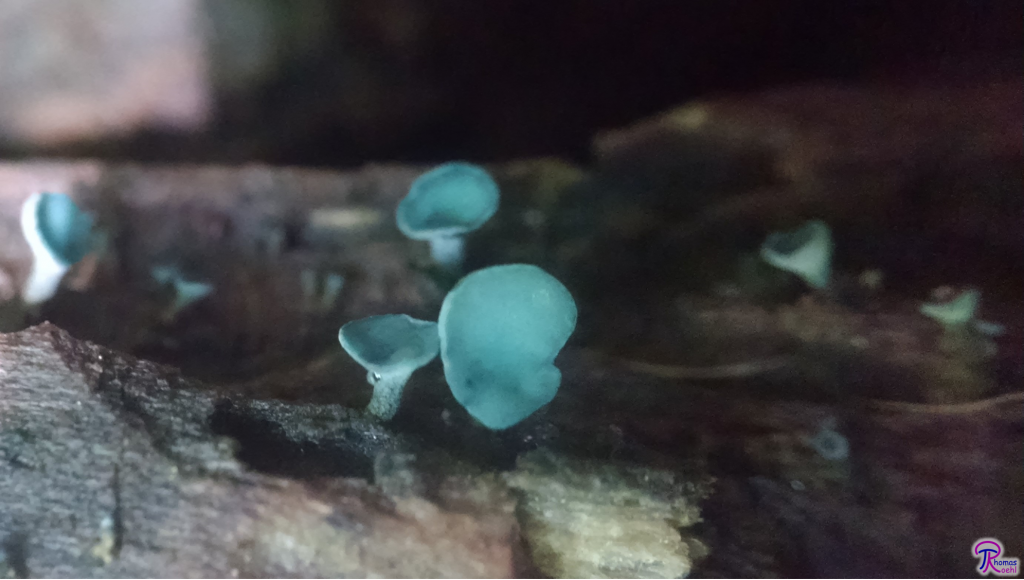
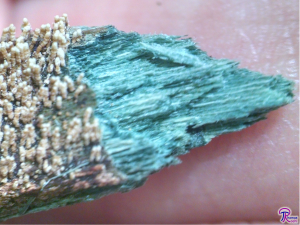
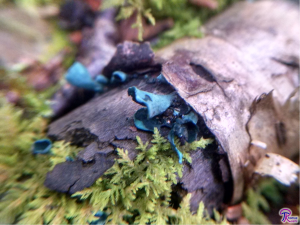
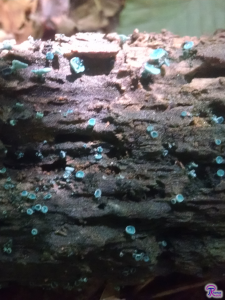

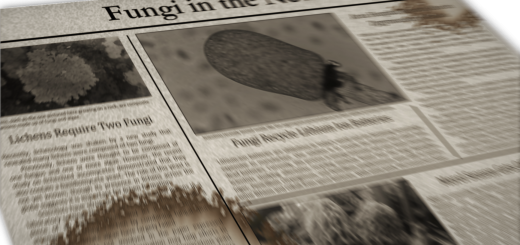





![#011: Characteristics of Kingdom Fungi [Archived]](https://www.fungusfactfriday.com/wp-content/themes/hueman/assets/front/img/thumb-small-empty.png)

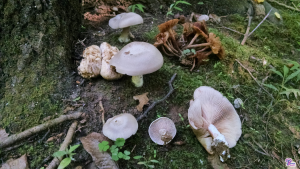
1 Response
[…] be small, some species produce rather long stipes (up to 10cm). One of my favorite cup fungi is Chlorociboria aeruginascens, which produces small, green-blue cups on well-decomposed wood. This fungus is unique in that the […]